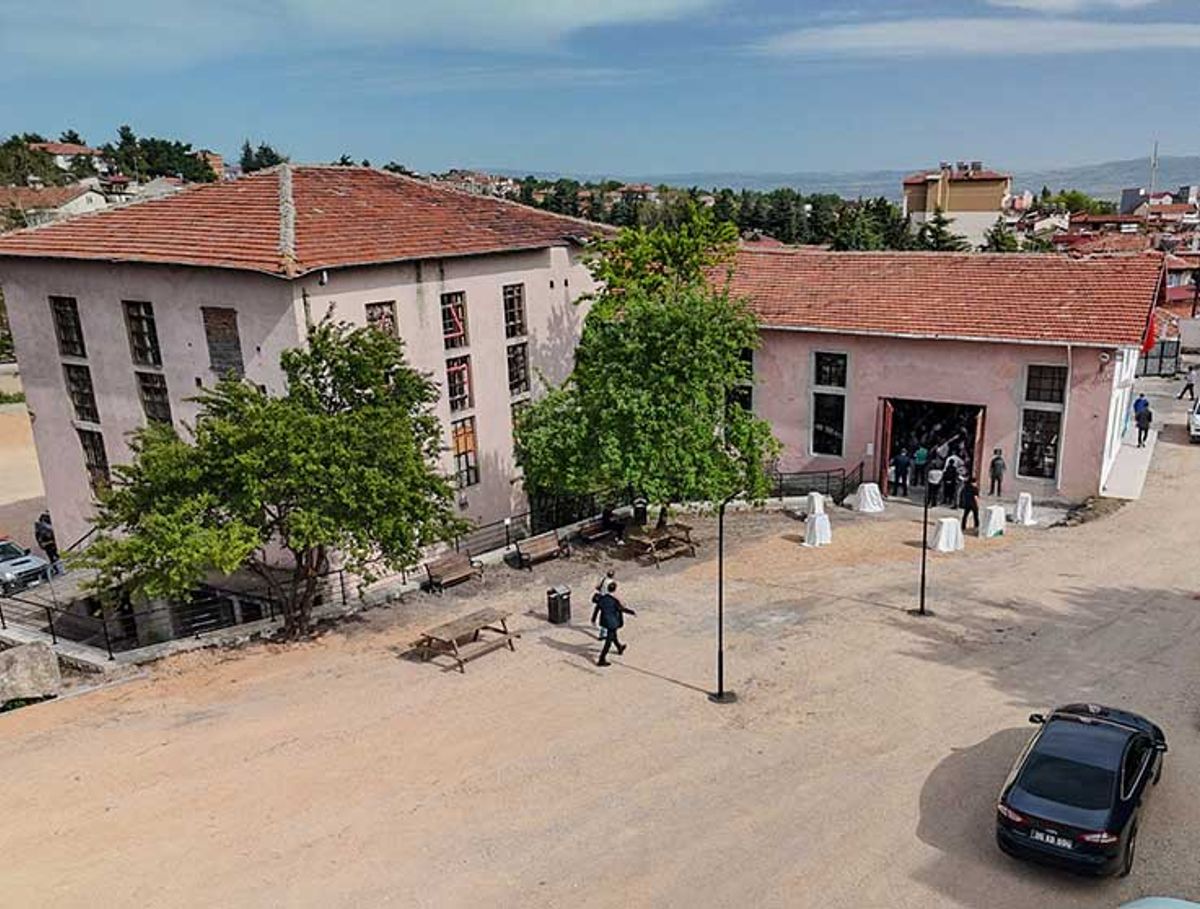A century-old power plant in northern Turkey has been converted into a culture hub, part of a European Union-backed effort to bring contemporary art and other programmes to parts of the country long left off the modern culture map.
Motorhane, which in its previous guise had supplied electricity to the town of Merzifon for decades, opened late last month with a concert and exhibition of works by local artists. The building still contains its generator, pressure valve and switch room, and its unplastered walls, steel-framed windows and concrete floors have yet to be restored, a project that Merzifon’s mayor, Alp Kargı, estimates will cost €1m.
Supporters of the project believe the best way to save Motorhane is to first build a network of local artists, civil society and elected officials to lead its transformation and programming. “We can find the money to restore a building. But to ensure it comes to life and is preserved, we need stakeholders,” Kargı says.
The Motorhane Culture Network (MOKA) is backed by Ortaklaşa, a cultural development body that is administered by the Istanbul Culture and Arts Foundation (İKSV), which has hosted the Istanbul Biennial since 1974. Armed with a €3m grant from the EU, Ortaklaşa has spent the last three years working with a dozen local initiatives to improve cooperation between culture actors and local government and reduce the country’s vast cultural disparities.
“Regardless of where you live, access to culture should be the right of every citizen,” says Özlem Ece, the director of cultural policies studies at İKSV. “But there is not enough opportunity across Turkey, especially in small and medium-sized cities, where a fundamental problem is a lack of public cultural spaces.”
Beyond Istanbul, contemporary art and culture in Turkey are underfunded and often overly reliant on the political priorities of government. The imbalance feeds stark economic and social divides between the country’s largest city and the rest of the country of 85 million people.
Other MOKA members include the Sinop Sustainable Development Association, which is sharing its experience running Sinopale, one of Turkey’s oldest biennials that takes place on the nearby Black Sea coast, and the revival of that town’s historic buildings for contemporary art.
“We want to build a bridge from the neighbourhood to the international scale,” says Alp Arısoy, MOKA’s coordinator. Artists in Merzifon “are part of a universal network but are pushed out to the edge. Our aim is to not only bring artists from outside to exhibit here, but for them to work with Merzifon’s artists and produce here.”
Egemen Umut Şen, part of a small community of artists and makers in Merzifon, is showing his installation of black-and-white portraits and found objects, called Aporia, at Motorhane’s inaugural exhibition Present Tense. “Anatolia has a long tradition of artistic production that has been lost, but you find nourishment in the heritage that has been left behind,” Şen says. “What we lacked was a space like this to share art.”
Motorhane “is a part of the city’s identity. It has a place in residents’ memories, and that gives it a meaningful, monumental character,” Arısoy says. Such landmarks from the Turkish Republic’s first century are often overlooked in favour of heritage from the Ottoman past, he adds.
When it opened in 1931, Motorhane was part of the early wave of industrialisation that followed the collapse of the Ottoman Empire. Electrification was a symbol of modernity in the young republic, although most rural areas remained without it until the mid-century.
Located 250km north-east of the Turkish capital of Ankara, Merzifon’s population of 70,000 faces an exodus of young people moving to Istanbul and other cities to pursue education, jobs and cultural opportunities, Kargı says. The town’s Wikipedia page dismissively describes it as having “few cultural amenities.”
“That’s precisely what we are trying to change,” Kargı says. “We want this to be a centre of art and culture for the region and Turkey. That [Wikipedia] text will soon need revision.”


